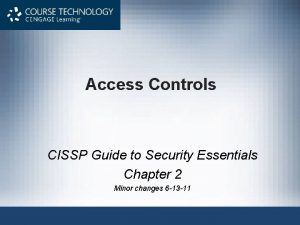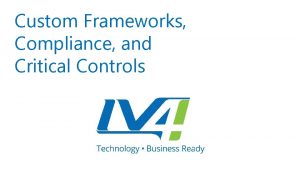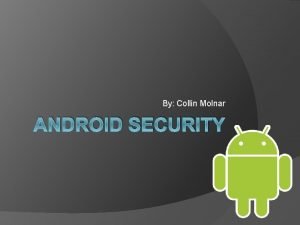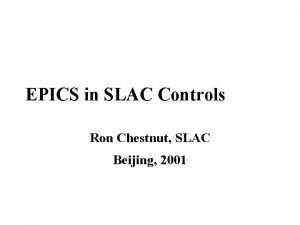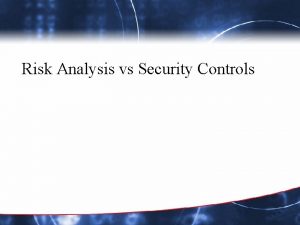SLAC Controls Security Overview Introduction SLAC has multiple








- Slides: 8

SLAC Controls Security Overview Introduction SLAC has multiple disciplines: Photon Science, Astrophysics, HEP Controls for LCLS, PEP, ILC EPICS and Legacy SLC Controls Use Central and Local Resources Design with Security in mind Implement security practices throughout project October 14, 2007 Control System Cyber-Security Workshop 1 Terri Lahey lahey@slac. stanford. edu

Centralized Resources: Security Central Security Team at SLAC Experts in security issues Interface with DOE Track issues Report to DOE Understands DOE-cyber procedures, which change Coordinate Security Reviews Help us implement and maintain secure control system remove clear text passwords (ftp, xdm) Block windows ports Tunnel into SLAC Coordination of site so other SLAC programs don’t impact us. October 14, 2007 Control System Cyber-Security Workshop 2 Terri Lahey lahey@slac. stanford. edu

Centralized Resources: Networks Central Management of SLAC Networks and Firewalls improves security Network address space defined by central network team Central management of switches & routers Central Physical Layer support Central and local Response to problems Controls network managers work with Central Network to meet our needs October 14, 2007 Control System Cyber-Security Workshop 3 Terri Lahey lahey@slac. stanford. edu

Design with Security in mind Isolate Control System networks control access to accelerator Some accelerator components require insecure protocols for control equipment, eg. Telnetd, and would be hard to run on main networks Keep non-control traffic off accelerator networks and vice versa Use configuration profiles when creating servers Standard implementation reduces chance for security problem (and potential operational problems) Use Good Account practices Individual accounts for individuals; disable and delete Common accounts locked down in control rooms for 24 x 7 operations Many more… October 14, 2007 Control System Cyber-Security Workshop 4 Terri Lahey lahey@slac. stanford. edu

Security Practices Upgrade/patch servers according to accelerator schedule Channel Access security by user Scan networks for security issues: Daily scheduled quarterly/downtime scan node on demand wireless on visitornet outside SLAC networks IFZ – IP range on every subnet disconnect point – test and user buyin if using Central Services Special laptops for accelerator physical connection & wireless October 14, 2007 Control System Cyber-Security Workshop 5 Terri Lahey lahey@slac. stanford. edu

Security Practices (2) Network management Register and track network nodes Enter control devices in DNS, with fixed IP addresses DHCP static addresses Router block unregistered nodes Track where nodes have been connected Upgrade: Enhance current network monitoring by integrating with EPICS October 14, 2007 Control System Cyber-Security Workshop 6 Terri Lahey lahey@slac. stanford. edu

Central Experts for Services Central experts for services that require a lot of attention to security web servers application servers Central Services Email Account Management Desktop management (build & patching) October 14, 2007 Control System Cyber-Security Workshop 7 Terri Lahey lahey@slac. stanford. edu

Conclusion Security of the worst node can cause problems for all – real or perceived Implement secure computers, networks and practices using local experts that work with central experts. Build secure architecture - know what is happening on your systems/network Create good procedures, and revise as needed October 14, 2007 Control System Cyber-Security Workshop 8 Terri Lahey lahey@slac. stanford. edu



